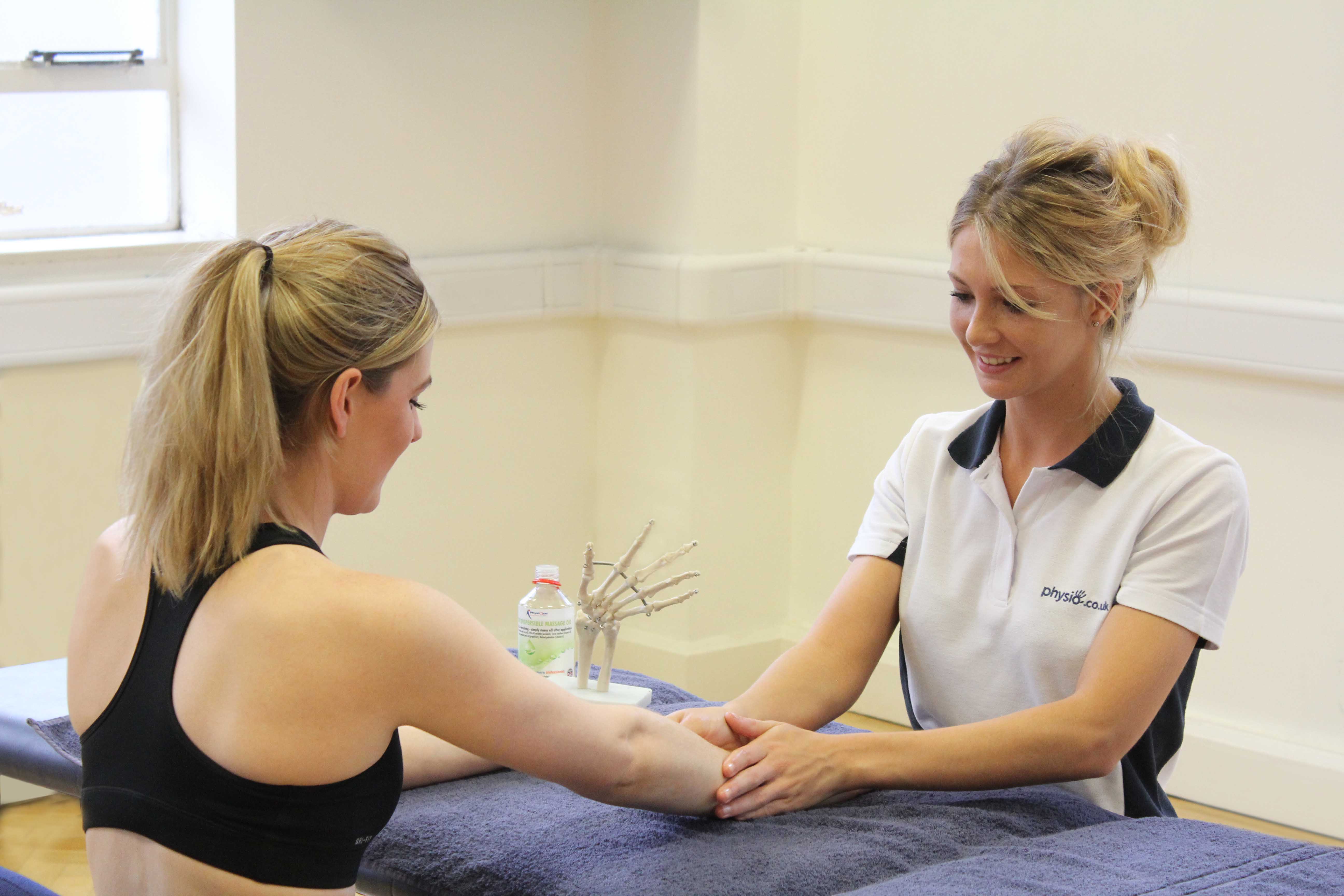What is ulnar nerve compression at the wrist?
Ulnar nerve compression is squashing of the ulnar nerve as it passes over the front of the wrist joint into the palm of the hand. Physiotherapy can effectively treat ulnar nerve compression at the wrist.
How does ulnar nerve compression at the wrist happen?
Ulnar nerve compression at the wrist is caused when the ulnar nerve is squashed between a hard object outside the body and the bones in the wrist and palm of the hand. This is often seen in cyclists who compress the nerve on their handle bars. It is also seen in people who perform martial arts as they can compress the nerve when defending or attacking using the wrist and palm of the hand. The nerve can also become compressed when the tissues surrounding the nerve become swollen. If the nerve is compressed, the messages passed along the nerve can be interfered with.
 Above: Therapist applying soft tissue massage to the forearm and wrist
Above: Therapist applying soft tissue massage to the forearm and wristWhat are the symptoms of ulnar nerve compression at the wrist?
Pain, numbness and pins and needles in the little finger and half of the ring finger are often experienced if the ulnar nerve is compressed. You may also be tender to touch across the front of the wrist and palm of the hand. Additional symptoms include:
What should I do if I have ulnar nerve compression at the wrist?
If you have compression of the ulnar nerve, you should seek advice from your physiotherapist. In the meantime, you should avoid any activities which aggravate your symptoms.
Physiotherapy treatment for ulnar nerve compression at the wrist.
Physiotherapy is important in the treatment of ulnar nerve compression. Your physiotherapist can diagnose your injury and establish its severity. You may need to be referred for special nerve conduction tests to assess the transmission of signals along the nerve. Following their assessment your physiotherapist will be able to determine an appropriate treatment plan.
Treatment may involve activity modification, the taking of anti-inflammatory medications and splinting of the wrist and hand. Your physiotherapist will also be able to assess and determine why you developed ulnar nerve compression and address this during your recovery to prevent a re-occurrence when you return to normal activities.
Other treatments can include:
- Manipulation / Mobilisation
- Wax therapy
- Postural Realignment
- FES
What shouldn’t I do if I have ulnar nerve compression at the wrist?
If you have or suspect you have compression of the ulnar nerve, you should not ignore it as it could prolong your recovery.
Could there be any long-term effects of ulnar nerve compression at the wrist?
Ulnar nerve compression does not usually cause any long-term effects, if it is properly diagnosed and appropriately treated. Left untreated, it can lead to ongoing altered sensation in the hand and a prolonged lay-off from participation in sports. In some situations this may occur despite receiving appropriate treatment. In these cases, surgery may be required to release the structures which are compressing the nerve and, therefore, alleviate your symptoms.
To arrange a physiotherapy assessment call Physio.co.uk on 0330 088 7800 or book online.

 0330 088 7800
0330 088 7800


































